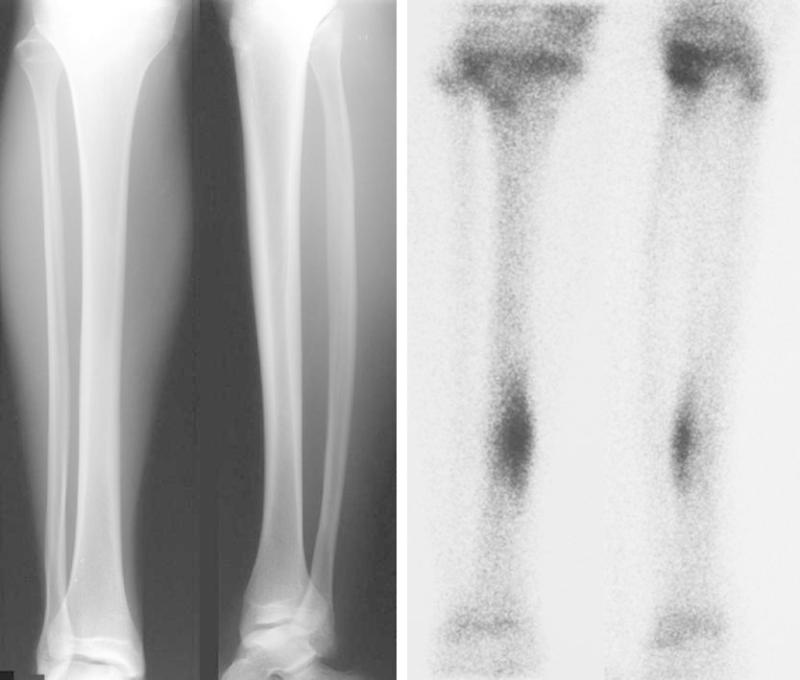

Resume running or other high-impact activities gradually, increasing time and distance slowly. When your doctor gives the OK, slowly progress from non-weight-bearing activities - such as swimming - to your usual activities. To reduce swelling and relieve pain, your doctor might recommend applying ice packs to the injured area as needed - 15 minutes every three hours. Stay off the affected limb as directed by your doctor until you are cleared to bear normal weight. This may take several months or even longer. It's important to give the bone time to heal. This type of test is also better able to distinguish between stress fractures and soft tissue injuries. It can visualize lower grade stress injuries (stress reactions) before an X-ray shows changes. An MRI is considered the best way to diagnose stress fractures. An MRI uses radio waves and a strong magnetic field to create detailed images of your bones and soft tissues. However, many types of bone problems look alike on bone scans, so the test isn't specific for stress fractures. The radioactive substance is heavily absorbed by areas where bones are being repaired - showing up on the scan image as a bright white spot. A few hours before a bone scan, you'll receive a small dose of radioactive material through an intravenous line. It can take several weeks - and sometimes longer than a month - for evidence of stress fractures to show on X-rays. Stress fractures often can't be seen on regular X-rays taken shortly after your pain begins. To keep your bones strong, make sure your diet includes enough calcium, vitamin D and other nutrients.Doctors can sometimes diagnose a stress fracture from a medical history and a physical exam, but imaging tests are often needed. Add low-impact activities to your exercise regimen to avoid repetitively stressing a particular part of your body. If you have flat feet, ask your doctor about arch supports for your shoes. Make sure your shoes fit well and are appropriate for your activity. Avoid increasing the amount you exercise by more than 10% a week. Start any new exercise program slowly and progress gradually. Simple steps can help you prevent stress fractures.

If underlying causes are not taken care of, you may be at higher risk of additional stress fractures. Some stress fractures don't heal properly, which can cause chronic problems. Eating disorders and lack of vitamin D and calcium can make bones more likely to develop stress fractures. Having had one or more stress fractures puts you at higher risk of having more. Conditions such as osteoporosis can weaken your bones and make it easier for stress fractures to occur. Worn footwear contributes to the problem.

People who have flat feet or high, rigid arches are more likely to develop stress fractures. Women, especially those who have abnormal or absent menstrual periods, are at higher risk of developing stress fractures. Stress fractures often occur in people who suddenly shift from a sedentary lifestyle to an active training regimen or who rapidly increase the intensity, duration or frequency of training sessions. Stress fractures are more common in people who engage in high-impact sports, such as track and field, basketball, tennis, dance or gymnastics. Risk factorsįactors that can increase your risk of stress fractures include: During remodeling, bone tissue is destroyed (resorption), then rebuilt.īones subjected to unaccustomed force without enough time for recovery resorb cells faster than your body can replace them, which makes you more susceptible to stress fractures. Stress fractures often result from increasing the amount or intensity of an activity too quickly.īone adapts gradually to increased loads through remodeling, a normal process that speeds up when the load on the bone increases.


 0 kommentar(er)
0 kommentar(er)
